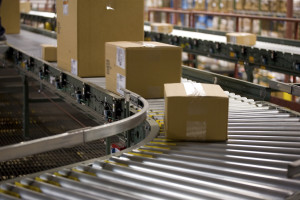 Amazon, with its 100+ fulfillment centers, has set the bar for consumer expectations on fulfillment time, cost and accuracy.
Amazon, with its 100+ fulfillment centers, has set the bar for consumer expectations on fulfillment time, cost and accuracy.
Many of the etailers who compete with Amazon have actually chosen to use Amazon’s distribution arm, Fulfillment by Amazon, to fulfill their orders. Those who choose to ship direct to customers, maintaining their own branding, must either build a fulfillment capability or choose a 3PL with the systems and processes to help them compete.
In 2014, Kanban Logistics invested in a full-featured warehouse management system (WMS) in the cloud (3PL Central) to meet the need for efficient processing of B2B orders, and also to have a robust platform to operate a growing number 3PL eCommerce fulfillment accounts. Frankly, with the Amazon effect, 3PLs that want to compete in this space don’t have a choice.
There are new rules for 3PL eCommerce fulfillment that must be followed to compete effectively. Here is quick summary below, courtesy of the folks at 3PL Central. Is your current partner making the grade?
Rule #1 – 3PLs must build seamless connections with their customers.
That means connections with the customer’s ERP, shopping cart, order management and EDI systems. The key is flexibility. In some cases, orders may flow from shopping cart to customer to the 3PL. In other cases, orders may flow directly to the 3PL for final fulfillment, with the order information sent to the customer after the fact.
Key questions to ask:
• Is your 3PL using the latest technologies to connect with your customers?
• Does your 3PL have the system and IT expertise to seamlessly connect with your systems?
• Is your 3PL’s WMS flexible enough to connect with the wide range of partners and suppliers demanded in the omni-channel environment?
Rule #2 – 3PLs must help customers select the right eCommerce engine.
Shopify, Big Commerce, Magento, Volusion… There are dozens of different choices for eCommerce shopping carts, each with unique price plans, features, volume capacity and admin capabilities. 3PLs need to advise customers on which shopping carts or order management systems work best and why.
Key question:
• Is your 3PL’s WMS capability of integrating with a wide range of shopping carts?
• Can your 3PL’s WMS provider offer expertise regarding reporting, order management or connectivity issues?
Rule #3 – 3PLs must care for their customers’ products as if they were they own
One of the biggest barriers to outsourcing 3PL eCommerce fulfillment is the customer’s fear of losing control of the brand presentation. That’s basic stuff like how the product is packed, the labeling, the packing slips and return labels, the neatness, etc. It’s all about attention to detail, and some etailers feel like an “outsider” won’t sweat these details like they would.
Key questions to ask:
• Does your 3PL have a process-driven quality program to ensure each order meets your guidelines for packing and shipping?
• Can your 3PL provide an audit trail should the consumer claim that the product arrived damaged, incomplete, or not at all?
Rule #4 – 3PL eCommerce fulfillment companies must have strong ties to delivery partners.
Typically, it’s the 3PL’s eCommerce customers that manage the website and their carrier partners (FedEx, UPS, etc) will handle final delivery. But it’s still critical for your 3PL to be tightly integrated with parcel carriers, systemically and in terms of the business relationship.
Key questions to ask:
• Is your 3PL’s system fully integrated with all major parcel carriers?
• How is tracking information being passed between between the carrier, the 3PL, the etailer and the consumer?
• Does your 3PL have strong relationships with local terminal personnel should the need arise for a late pick-up or special request?
Rule #5 – 3PLs must provide 24-7 visibility into inventory and order shipment status.
You must provide Amazon-like service by quickly and easily accessing all of the data flowing through the fulfillment chain. That requires a powerful, flexible WMS.
Key questions to ask:
• Can your WMS seamlessly connect with all other fulfillment partners?
• Can your 3PL’s WMS provide accurate inventory and customer order state in real time, and can this data be accessed 24-7?
When you are looking at potential 3PL eCommerce fulfillment partners, don’t assume that the 3PL’s systems are up to the task. Dig in and ask the tough questions. Even the best operators will struggle if their systems are outdated and lack the features required to meet the consumer’s high expectations.



